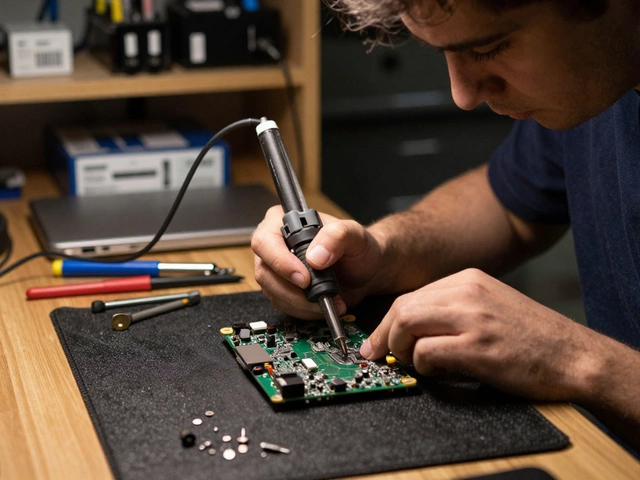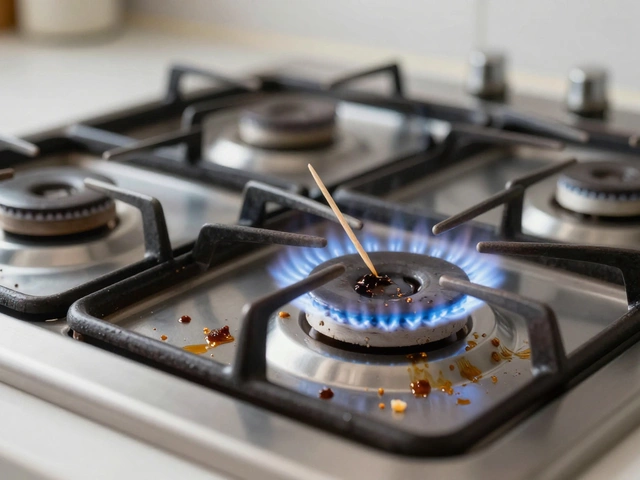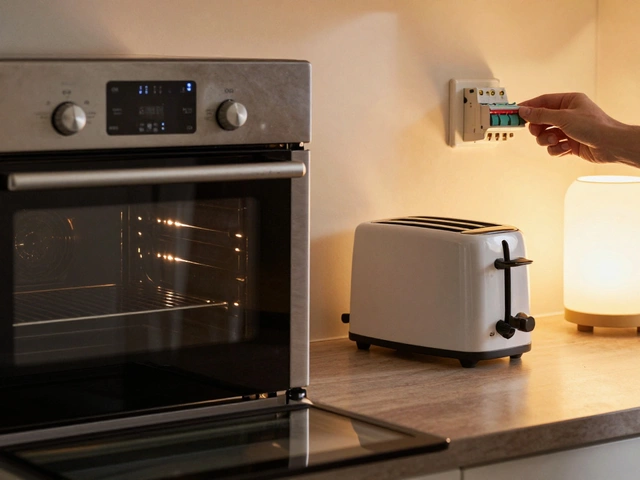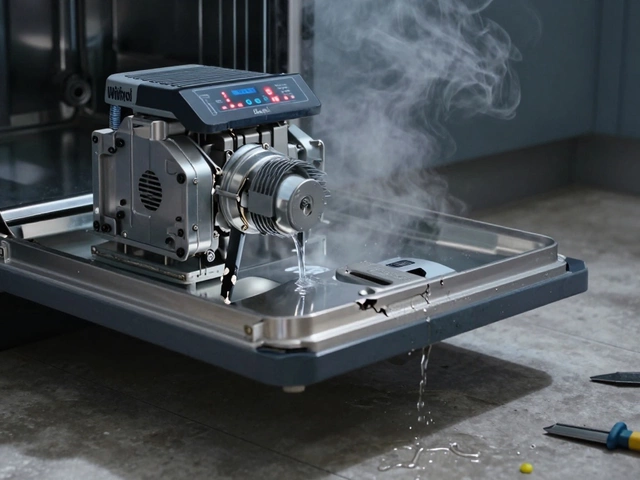Your oven probably isn't something you count the birthdays of, but maybe you should. The numbers might actually surprise you. Most electric ovens these days are built to last around 13 to 17 years. Hitting 20 years is possible, but it isn’t the norm—and honestly, it depends less on luck and more on what happens in your kitchen.
If you're the kind of cook who loves baking every weekend, your oven is clocking in more miles than the average set-it-and-forget-it user. That extra use adds up. Still, people don’t often realize that it’s not just heavy use—things like ignoring a wonky door seal or letting crumbs burn on the bottom actually shave years off that lifespan.
And don’t be fooled: newer ovens aren’t always better at staying alive longer. A study from a major American home appliance repair chain showed older ovens from the early 2000s had fewer breakdowns than newer models. Why? Modern ovens have more electronic parts that can go haywire, and those touch panels or sensors don’t like heat, moisture, or power surges.
- How Long Do Ovens Usually Last?
- What Makes Ovens Break Down Early?
- Signs Your Oven Needs Repair
- Should You Repair or Replace?
- Easy Maintenance Habits for Longevity
- When 20 Years Isn't Worth It
How Long Do Ovens Usually Last?
When you shop for an oven, you probably don't ask, "Will this thing outlive my fridge?" But knowing the average real-life lifespan can help you plan—and maybe save a headache or two. For electric ovens, the expected range is often 13 to 17 years. Gas ovens land in a similar ballpark. Some folks do get lucky and their oven clocks past 20 years, but that’s rare nowadays with the way parts are made and the way people use them.
If you want hard numbers, check out what appliance repair pros and manufacturers say. The National Association of Home Builders and Consumer Reports agree: most ovens last about 15 years before parts fail or efficiency drops. But how you use and care for your oven makes a bigger impact than the model or the brand most of the time.
Let’s put some actual data on the table so you can see where most ovens stack up:
| Oven Type | Average Lifespan (years) | Common Failure Point |
|---|---|---|
| Electric Oven | 13 - 17 | Heating elements, control boards |
| Gas Oven | 15 - 17 | Igniters, gas valve |
| Older (pre-2005) Electric Oven | 17 - 22 | Thermostats, wiring |
One big thing to keep in mind: even the best oven lifespan numbers don’t mean yours will make it unless you pay attention to warning signs and don’t skip maintenance. Stuff like skipping a broken oven seal or using self-clean way too often will speed up wear and tear. Treat your oven right, and hitting that 15-year mark becomes a whole lot easier.
What Makes Ovens Break Down Early?
Most ovens don’t just give out because of old age. Stuff wears out fast when you skip out on the basics. Let’s break down the main reasons even a decent oven can turn into a money pit before it hits 20 years.
First, grease and food spills are worse than they look. When baked-on gunk covers the heating elements or collects around the fan, it messes up airflow and heat balance. Over time, this makes parts overwork and shortens the oven lifespan. Forgetting to clean out drips or crumbs lets these problems quietly stack up, and you won't notice until something stops working.
Next up, skipping maintenance—like ignoring a wobbly door hinge, brushing off a cracked gasket, or never checking the timer for weird ticks—doesn’t just make your oven annoying to use. It wrecks efficiency and lets heat escape, so your oven works harder than it should. That extra strain wears out the electronics and heating elements way faster.
Modern ovens also come with more digital panels, touch controls, and sensors. Sounds convenient, right? Not so much when you get a power surge or moisture sneaks inside. The electronic parts fry quickly, and they’re expensive to replace. Old-school knobs rarely caused as much trouble.
Here are some sneaky mistakes that zap oven life:
- Using harsh cleaning chemicals—these can eat away at seals and electronics over time.
- Slamming the oven door—for a quick second, it feels harmless, but it shakes loose wiring and damages door components.
- Not using surge protectors—most people just plug their oven into the wall and forget about voltage spikes.
- Ignoring warning signs—the weird smells, flickering display, or uneven heating aren’t just random quirks. They’re red flags.
So, if you want your oven to stand a chance at 20 years, start by knocking out these bad habits. Simple upgrades in how you treat and maintain your appliance can make the biggest difference.
Signs Your Oven Needs Repair
Spotting early problems with your oven makes a huge difference. Ignoring small issues can mushroom into big, wallet-draining repairs. So, what are the telltale signs it’s time to show your oven some love—or call in a pro?
- Oven lifespan drops quickly when it won't heat up right. If you set it to 400°F and the temp jumps around or doesn’t get hot enough, that’s trouble. Usually, it’s a failing heating element or a busted thermostat.
- Strange smells or smoke (not from last night’s lasagna overflow) are a red flag. This could mean electrical short circuits, melted wiring, or stuck-on food burning every time you cook.
- If your oven’s taking longer to bake things or food comes out uneven—raw in the middle, burnt on the edges—your heating elements or sensors are probably acting up.
- A door that’s not closing right lets heat seep out. Even a small gap can cost you in energy and create uneven cooking. Sometimes it’s just a wonky hinge, other times it's a worn-out gasket (that rubbery strip around the door).
- Unresponsive controls or a blank display? That’s usually a control board or wiring issue, especially in digital models.
Need numbers? Check out this quick rundown from a 2023 appliance repair report of the most common oven repair calls in the US:
| Problem | % of Repair Calls |
|---|---|
| Oven not heating | 39% |
| Temperature inaccurate | 21% |
| Broken door/gasket | 17% |
| Oven won’t turn on | 13% |
| Display/control issues | 10% |
One more tip: if you hear weird buzzing, clicking, or popping noises, don’t ignore them. These noises could point to electrical issues, which are nothing to mess with, especially when you rely on that oven for family dinners. Quick action saves you money and headaches down the line.
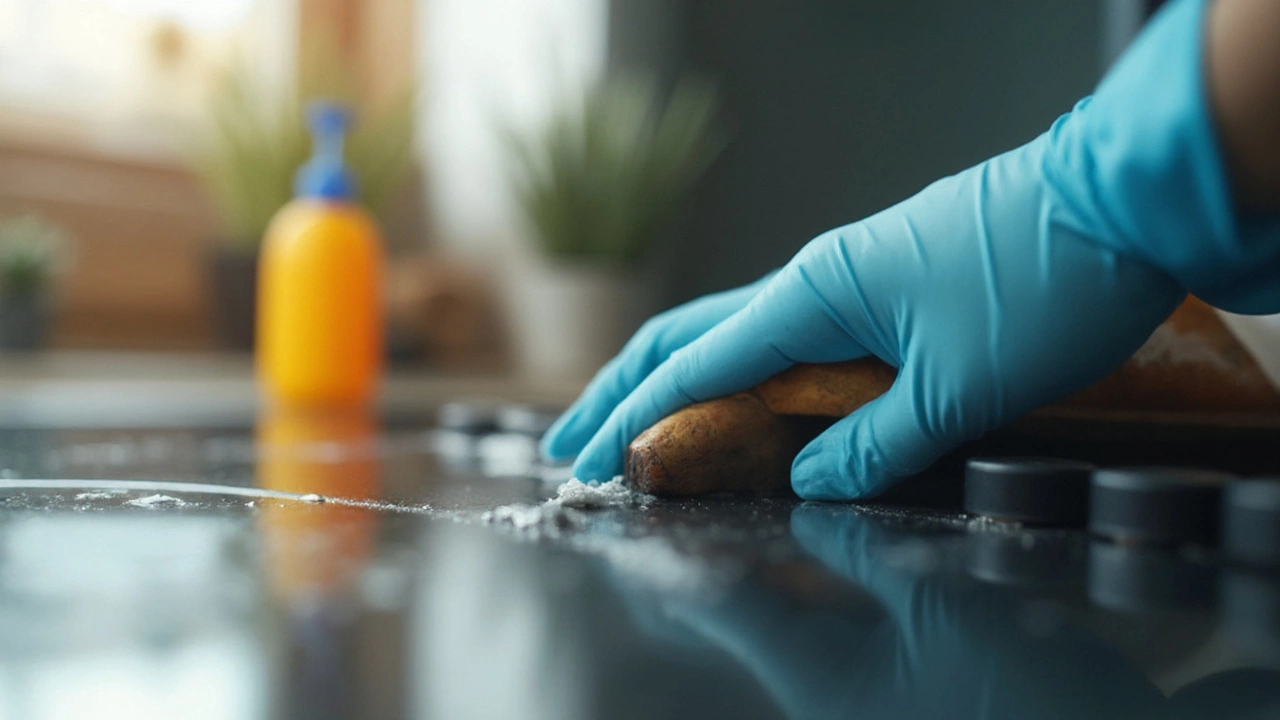
Should You Repair or Replace?
This is the big one. When your oven starts acting up, the choice to fix it or ditch it gets real fast. For most people, money is the decider. Here’s the straight-up rule: if the repair costs more than half the price of a new oven, replacement usually makes more sense.
The age of your oven also matters. If it’s pushing close to the average 13-17 year mark, piles on repair bills, and you struggle to find parts, it’s probably waving the white flag.
Let’s break down what you should look at before calling it quits:
- Oven lifespan: Older ovens (over 10 years old) are more likely to need more fixes soon, even after a repair.
- Cost of repair: If the fix is cheap (like under $150 for a burner or seal), go for it. If you're told you need a new control board or heating element and the estimate is $300 or more, pause and compare with the price of a basic replacement ($500–$1,200 for decent new electric models).
- Availability of parts: Some brands or old models are a nightmare for finding parts. If the part you need is discontinued, the choice is made for you.
- Safety: If you’re dealing with electrical faults that trip your breakers or can’t be safely fixed, do not risk it. Get a replacement.
- Energy efficiency: Older ovens waste more electricity. A new one can actually save you money on your monthly bill.
Check out this comparison of repair vs. replacement decisions made by professional repair techs in the U.S. over the past year:
| Oven Age | Repair Chosen (%) | Replacement Chosen (%) | Avg. Repair Cost |
|---|---|---|---|
| 0-5 years | 85 | 15 | $120 |
| 6-10 years | 60 | 40 | $170 |
| 11-17 years | 35 | 65 | $250 |
| 18+ years | 20 | 80 | $330 |
One last tip: ovens tend to get their most expensive repairs right near the end of their life, which is also when they're least energy-efficient. So if your oven is more than 15 years old and coughing up big problems, retiring it is usually the better move for your wallet—and your peace of mind.
Easy Maintenance Habits for Longevity
If you want your oven to keep kicking past the ten-year line or even head toward twenty, habits are what matter most. Most breakdowns—the stuff that ruins family dinners and costs money—can be avoided with just a bit of regular upkeep.
Here’s what actually matters:
- Keep it clean. Wipe up spills as soon as the oven cools. Burnt-on food not only smells bad, but over time, it stresses heating elements and even blocks air vents. Most repair techs agree that a full, deep clean every 2 to 3 months is enough—skip the self-clean feature if you can, as it can damage components (like control boards) with high heat.
- Check door seals. That rubber gasket isn’t just for looks. When the seal cracks or loosens, heat escapes, which makes your oven work harder. Give it a pinch test every couple of months—if it feels brittle or chunks are missing, it’s time for a $15 fix that can save you much more later.
- Inspect heating elements. Take a quick look every so often. Any bulges, uneven coloring, or sparks when turning on? That’s your cue to replace before it fails during your big baking day. Swapping a bad element isn’t rocket science and usually runs $30-$80.
- Watch those electronics. If your control panel is acting weird after a thunderstorm, unplug and let it sit for a few minutes. Power surges are a top reason for costly repairs in digital ovens, especially recent models.
- Stay clear of foil on the oven floor. It can mess with airflow and cause heat sensors to work wrong, which strains components and leads to uneven bakes (and part failures).
Take a look at how a few simple habits impact oven lifespan, according to real repair data:
| Maintenance Habit | Common Lifespan (Years) |
|---|---|
| Regular cleaning, checked gaskets | 17-20 |
| Neglected cleaning, ignored small issues | 9-13 |
| Proper surge protection | 15-20 |
| Frequent use of self-clean setting | 9-12 |
Bottom line? A little attention can tack years onto your oven’s working life. You don’t have to baby it—just check the basics every season, knock out the quick fixes, and keep things clean. These small moves are what really make that oven lifespan stretch toward 20 years.
When 20 Years Isn't Worth It
Pushing your oven past the 20-year mark sounds impressive, but at some point it just doesn’t add up anymore. Here’s the hard truth: even if an old oven still heats up, it might be costing you more than you think. Older models guzzle way more electricity compared to newer, energy-efficient units. Sticking with a power hog can show up on your energy bill month after month.
Repair costs pile up, too. Once an oven crosses the 15-year line, replacement parts get harder to find. If your oven needs a new circuit board or heating element, there’s a good chance the part will be pricey and the wait will be long, especially for rare or discontinued models. Sometimes, a single major repair can run half the price of a whole new oven.
Safety is another big reason to let go. Insulation breaks down, wiring gets brittle, and old seals can leak heat or even gases. It’s not something everyone thinks about, but it puts your kitchen at risk. If your oven smells weird or lights flicker when you use it, that’s not something to push through.
Here are a few signs that keeping your oven is no longer worth it:
- Repair costs are more than half the price of a new oven.
- Your energy bills spike when you use it.
- Replacement parts are obsolete or back-ordered for months.
- Inconsistent cooking (hot and cold spots, even on basic recipes).
- Electrical issues like tripping breakers or weird smells.
At this stage, those extra years just aren’t worth the hassle or the hidden costs. The most important time to think about your oven lifespan is before it leaves you scrambling for takeout—or worse, looking at an electrical fire. Sometimes, calling it quits is the smartest move.

